Early to Modern Bavaria
People have lived in what is now Bavaria for a very long time. Various tribes banded together as the settlements progressed, growing even as the political structures above them changed, from a duchy to an imperial client state, and then to a powerful part of a new empire.
Prussia: German Powerhouse for Centuries
Prussia was a powerful state and kingdom in what is now Germany, dominating the landscape of Central Europe for centuries, triumphing in some high-profile wars in the 19th Century and playing a large part in the unification of Germany.
Early to Modern Saxony
Saxony was home to powerful and influential people very early on, dispersing to and eventually conquering England. Powerful Saxon leaders ruled over the Holy Roman Empire for a time as well. The Saxon kingdom survived into the 19th Century.
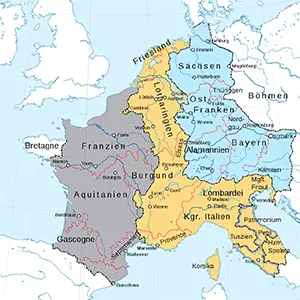
Louis the German
Louis the German was King of East Francia for nearly three decades in the 9th Century. A grandson of the famous Charlemagne, he lived his life mostly as a conqueror.
The Kingdom of East Francia
Beginning with Louis the German and ending with Otto the Great, this kingdom dominated Central Europe for a short period of time.
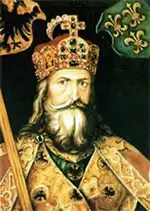
Otto the Great
Otto the Great (left) was the most powerful figure in Europe in the first half of the 10th Century. His reign extended from Duke of Saxony to King of East Francia and then to Holy Roman Emperor. He ruled over a vast amount of territory.
Otto II: German King, Holy Roman Emperor
Otto II was Holy Roman Emperor and King of Germany for the better part of two decades in the latter half of the 10th Century. A powerful ruler, he hand-picked a pope and nearly achieved rule over all of Italy.
Otto III: German King, Holy Roman Emperor
Otto III was King of Germany and Holy Roman Emperor for a time during the late 10th Century. Like his father, Otto II, he became embroiled in Italian politics and also launched an ill-fated effort to rule Italy.
Henry II: German King, Holy Roman Emperor
Henry II was King of Germany for more than two decades and Holy Roman Emperor for a decade, in the 11th Century. He spent most of his reigns fighting to maintain his realms.
Conrad II: German King, Holy Roman Emperor
Conrad II was King of Germany, Italy, and Burgundy and was also Holy Roman Emperor, in the 11th Century. He, too, found enemies on all sides.
Henry III: German King, Holy Roman Emperor
Henry III was Holy Roman Emperor and King of Germany during two turbulent decades in the 11th Century. He was both an adept politician and a skillful military leader.
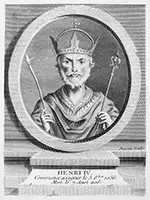
Henry IV: German King, Holy Roman Emperor
Henry IV (right) was one of the most famous of the Holy Roman Emperors, ruling in the late 11th Century and into the early 12th Century. He is perhaps most famous for his battles with the Catholic Church and with a number of recalcitrant nobles.
Henry V: German King, Holy Roman Emperor
Henry V was King of Germany and Holy Roman Emperor during a turbulent time at the end of the 11th Century and beginning of the 12th Century. He gained power by forcing his father, Henry IV, to abdicate.
Lothair III: German King, Holy Roman Emperor
Lothair III was King of Germany and Holy Roman Emperor in the early 12th Century. He was notable for his succeeding to the German throne as the result of an election, not a hereditary succession.
Conrad III: German King, Holy Roman Emperor
Conrad III was King of Germany for 14 years in the 12th Century. His turbulent reign was full of conflict both within Germany and elsewhere.
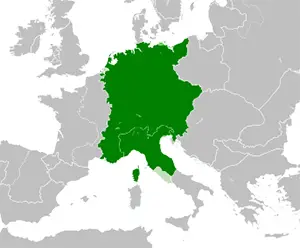
Frederick Barbarossa
Frederick Barbarossa was a powerful figure on the European political and military scene in the 12th Century. He was Holy Roman Emperor and led forces into the Holy Land on Crusade. He famously died in a rather odd way.
Henry VI: German King, Holy Roman Emperor
Henry VI was King of Germany and Holy Roman Emperor in the latter half of the 12th Century. At its height, his realm was one of the largest ever in the empire.
Philip of Swabia: King of Germany
Another son of Barbarossa, he followed in his brother's footsteps, extending the power of Germany but, without support of the pope, failing to achieve the title of Holy Roman Emperor.
Otto IV: King of Germany, Holy Roman Emperor
The onetime Otto of Brunswick rose up against both Henry VI and Philip of Swabia and achieved kingship status in Germany and then the imperial throne. He found himself the victim of turnabout at the hands of Henry's son, who succeeded him.
Frederick II: King of Germany, Holy Roman Emperor
Frederick II was King of Germany and Holy Roman Emperor in the 13th Century. His reign was marked by intense struggles with the Catholic Church.
Conrad IV: German King, Holy Roman Emperor
Conrad IV was King of Germany for more than a decade in the 13th Century. A member of the Hohenstaufen dynasty, he was also King of Jerusalem. His death created a power vacuum in the Holy Roman Empire.
Rudolf I: King of Germany
Rudolf I was King of Germany for most of two decades in the latter part of the 13th Century. He was the first king from the House of Habsburg.
Adolf I: King of Germany
A strong fighter and savvy political strategist, Rudolf I was King of Germany for half a dozen years at the end of the 13th Century.
Albert I: King of Germany
Albert I achieved the kingship of Germany but found himself beset on all sides by opponents. He finally found the blessing of the pope, but he died in battle not long after that.
Henry VII: German King, Holy Roman Emperor
Henry VII was Holy Roman Emperor and King of Germany in the early 14th Century. He was the first emperor from the House of Luxembourg.
Louis IV: German King, Holy Roman Emperor
Louis IV was King of Germany and Holy Roman Emperor for a time during the first half of the 14th Century. He was from the House of Wittelsbach.
Charles IV: German King, Holy Roman Emperor
Charles IV was King of Germany and Holy Roman Emperor for more than three decades in the mid-14th Century. He even got himself mixed up in the Hundred Years War.
Wenceslaus IV: King of Germany
Wenceslaus was King of Germany for 24 years at the end of the 14th Century. His reign was known for its turbulence. During these uncertain years, Wenceslaus maintained his faith and had created a stylishly illuminated manuscript that has come to be known as the Wenceslas Bible. It was one of the earliest translations of the Bible into German.
Rupert: King of Germany
Rupert was King of Germany for a decade at the start of the 15th Century. He successfully defended his kingdom, not least by making an alliance with England.
Sigismund: German King, Holy Roman Emperor
Sigismund was Holy Roman Emperor and King of Germany for a time in the early 15th Century. He played a role in ending the Catholic Church's Great Schism.
Jobst: King of Germany
Jobst was King of Germany for a few short weeks in the early 15th Century. He emerged from a power struggle as the strongest man standing, but he died not long after achieving goal.
Albert II: King of Germany
Albert II restored Habsburg rule to the German throne. Among his prime achievements were the ending of private warfare and feuds and the division of Germany into administrative circles, from which his successors benefited much more than he did. He died on campaign.
Frederick III: German King, Holy Roman Emperor
Frederick III was King of Germany for more than five decades in the 15th Century and was also Holy Roman Emperor for nearly that long. His rule set the stage for the preeminence of the House of Habsburg.
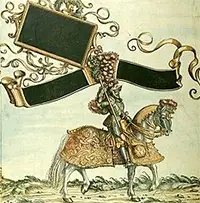
Maximilian I: Holy Roman Emperor and Habsburg Superstar
Maximilian I, King of Germany and Holy Roman Emperor (right), was a giant figure on the European stage, dominating events throughout the Continent for several decades in the 15th and 16th Centuries.
Charles V: Holy Roman Emperor and Spanish Monarch
He succeeded his grandfather, Maximilian I, as Holy Roman Emperor and dominated the European scene for decades. His was nominally head of Germany for a time, giving way eventually to his brother Ferdinand, in both Germany and the wider Empire.
Ferdinand I: King of Germany
Ferdinand I was King of Germany for more than four decades and Holy Roman Emperor for several years in the 16th Century. He saved Vienna from the invading Ottomans during a great siege, and he presided over the Peace of Augsburg, one of the most far-reaching religious agreements in the history of the Catholic Church.
Maximilian II: German King, Holy Roman Emperor
Maximilian II was Holy Roman Emperor and King of Germany for a time in the mid-16th Century. He grew up and reigned during the Protestant Reformation.
Rudolf II: German King, Holy Roman Emperor
Rudolf II was King of Germany and Holy Roman Emperor for a time in the late 16th Century and early 17th Century. He pursued a war with the Ottoman Empire as a way to squelch the Protestant Reformation; the result was defeat and imprisonment, at the hands of his successor, Matthias.
Matthias: German King, Holy Roman Emperor
Matthias was King of Germany and Holy Roman Emperor for a time in the early 17th Century. He was on the imperial throne when the Thirty Years War began.
Ferdinand II: German King, Holy Roman Emperor
Ferdinand II was King of Germany and Holy Roman Emperor for a time in the first half of the 17th Century. He was on the throne during the early fighting of the Thirty Years War.
Ferdinand III: German King, Holy Roman Emperor
Ferdinand III was King of Germany and Holy Roman Emperor for a time in the 17th Century. He was emperor when the Thirty Years War ended.
Ferdinand IV: King of Germany
Ferdinand IV was King of Germany for a time in the mid-17th Century, during the Thirty Years War.
Leopold I: German King, Holy Roman Emperor
Leopold I was Holy Roman Emperor and King in Germany for a time during the last part of the 17th Century and the first few years of the 18th Century. His long reign included the prosecution of a handful of European wars.
Joseph I: German King, Holy Roman Emperor
Joseph I was Holy Roman Emperor and King of Germany for a time in the late 17th Century and early 18th Century. He was on the throne during most of the War of the Spanish Succession.
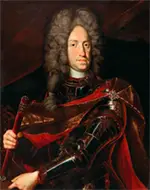
Charles VI: German King, Holy Roman Emperor
Charles VI (left) was Holy Roman Emperor and King of Germany for a time in the early 18th Century. He is most well-known for the introduction of the Pragmatic Sanction, by which he hoped to have his daughter succeed him on the imperial throne.
Maria Theresa: Empress of Austria
Maria Theresa was Holy Roman Empress for four decades in the 18th Century, surviving a devastating war over her succession and ruling over a period of great reform.
Charles VII: German King, Holy Roman Emperor
Charles VII was Holy Roman Emperor for a time during the first half of the 18th Century. His reign was marked by controversy and war, particularly against the empress, who eventually prevailed.
Francis I: German King, Holy Roman Emperor
Francis Stephen was Holy Roman Emperor for a time in the mid-18th Century. He was the husband of Holy Roman Empress Maria Theresa.
Joseph II: Ruler of Austria
The second husband of Maria Theresa, he was Holy Roman Emperor in his own right after she died, becoming a proponent of enlightened absolutism.
Leopold II: Ruler of Austria
Succeeded his brother on the thrones of Austria and the Holy Roman Empire. His desire to reverse the enlightened policies of his predecessor led to deep discontent in the country and resulted in the enmity of revolutionary France.
The Confederation of the Rhine
The Confederation of the Rhine was a political entity created by Napoleon Bonaparte in 1806, during the War of the Third Coalition. It contained 35 former German states.
The German Confederation
The German Confederation banded together various Central European kingdoms and former German states for five decades in the 19th Century.
Francis II: Ruler of Austria
Son of Leopold II, he was the last Holy Roman Emperor and the last Archduke of Austria. He took command of troops fighting in the coalition wars against France. In the middle of it all, he declared himself the first Emperor of Austria. His most famous advisor was Klemens von Metternich.
Ferdinand I: Emperor of Austria
Ferdinand I was Emperor of Austria for more than a dozen years in the 19th Century, giving way in the wake of the revolutionary fervor that swept many European countries in the middle of the century.
Franz Josef: Emperor of Austria
Franz Josef was Austrian emperor from 1848 to 1916. During that time, he presided over a large number of changes in his homeland, including the devastation of World War I.
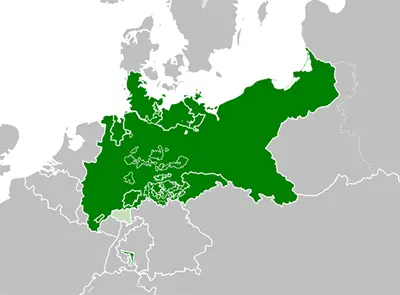
The North German Confederation
The North German Confederation (right) was a collection of German states formed under the umbrella of Prussian dominance in the latter half of the 19th Century.
Zollverein: Germany's 19th-Century Economic Union
The Zollverein was an economic union of an increasing number of German states in the 19th Century, laying the foundation for the later unification of Germany.
Otto von Bismarck: Germany's 'Iron Chancellor'
Otto von Bismarck was one of the most famous statesmen in 19th Century Europe. He was the driving force behind the 1871 unification of Germany.

The Unification of Germany
In 1871, what had been hundreds of disparate German states became one, with the advent of the German Empire.
Wilhelm I: First Emperor of Germany
Wilhelm I was King of Prussia and Emperor of Germany for more than two decades in the late 19th Century.
The German Imperial Government
The government of the German Empire consisted of various elements, each with varied responsibilities. At the top was the Kaiser, or emperor. Advising him were an array of elected and appointed officials. All of that was delineated in a Constitution.
The German Imperial Government: Political Parties
The members of the Reichstag, the German Imperial Parliament, were of various political parties.
Frederick III: Emperor of Germany
Frederick III was Emperor of Germany for just a few months, in the latter half of the 19th Century. His short reign came between two long and powerful ones.
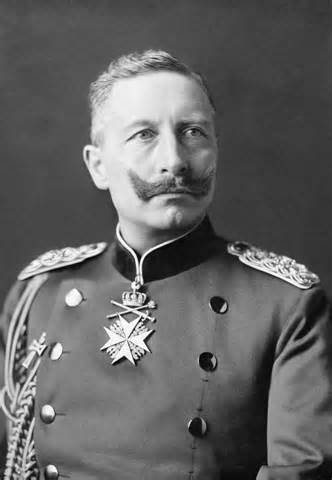
Wilhelm II: Germany's Last Kaiser
Wilhelm II (left) was the third ruler of the newly united Germany and the leader of that country during World War I.
The German Revolution
The German Revolution replaced an empire with a republic in the wake of the end of World War I.
The Weimar Republic: Germany's Interwar Government
The Weimar Republic governed Germany for 14 years after the end of World War I.
Friedrich Ebert: Germany's First President
Friedrich Ebert rose from humble beginnings and became the first President of Germany.
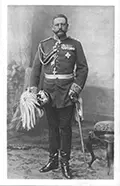
Paul von Hindenburg: German War Hero, President
Paul von Hindenburg (right) was a successful World War I general and the last President of Germany's Weimar Republic.
The Rise of the Nazi Party
The National Socialist German Workers' Party, much more well-known as the Nazi Party, rose to prominence from obscurity and governed Germany for 12 years, achieving a takeover of German lives and livelihoods and prosecuting a war that killed millions, including the extermination of many people solely based on their religion or way of life.
The Reichstag Fire
The Reichstag fire severely damaged the house of the German legislature in 1933 and became a pretext for the Nazi assumption of power.
The Enabling Act
The Enabling Act consolidated the power of the German government in the hands of its Chancellor, Adolf Hitler, in 1933.
The Life of Adolf Hitler
Adolf Hitler was the all-powerful sole leader of Germany for a tumultuous 12 years in the first half of the 20th Century, the prime instigator of World War II, and one of the architects of the Holocaust.
|
Search This Site
 Custom Search
|
Social Studies for Kids
copyright 2002–2020
David White
